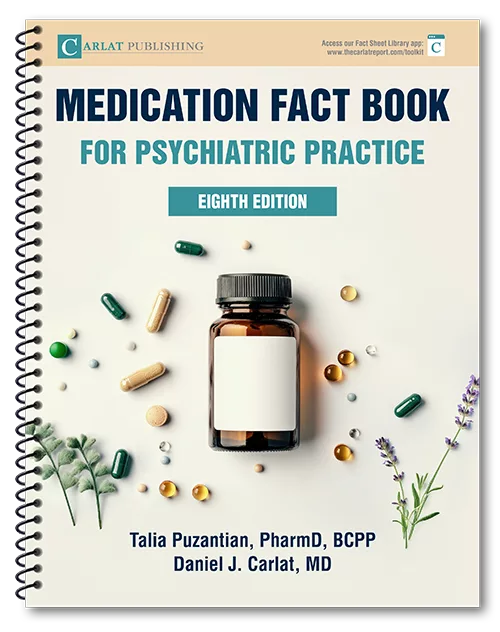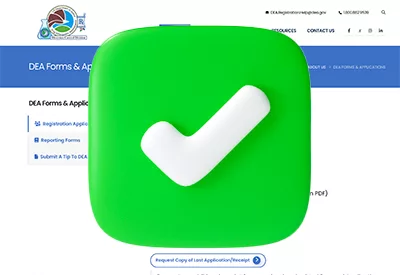The Diagnostic Expansion of ADHD, Part 1

C. Thomas Gualtieri, MD
Medical Director, North Carolina Neuropsychiatry Clinics, Chapel Hill and Charlotte, NC. Author of ADD World and the Adderall Explosion (2024).
Dr. Gualtieri has no financial relationships with companies related to this material.
TCPR: How has stimulant use changed over the years?
Dr. Gualtieri: When Benzedrine, the first amphetamine, was released in 1928, it was promoted as a nasal decongestant, much as pseudoephedrine (Sudafed) is used today. It wasn’t long before the manufacturer, Smith, Kline & French, began to explore its effects as a brain stimulant—as did a lot of people in the 1930s. Benzedrine was called an “energy drug” in the US and a “confidence drug” in the UK. Physicians commented on students taking Benzedrine to prepare for exams.
TCPR: How did their use expand to ADHD?
Dr. Gualtieri: That started in 1937, when Charles Bradley tested amphetamine for headaches in children who were living at a residential treatment center he ran. The teachers reported that the children did better in school after they took amphetamine. The kids called it their “math pill.” Bradley published his results, but they were ignored. At the time, there was no concept of ADHD, and Bradley wasn’t treating ADHD. He gave it to all his patients: children with behavior disorders, psychosis, autism, etc (Strohl MP, Yale J Biol Med 2011;84(1):27–33). Most of them improved, whatever the diagnosis.
TCPR: How did we get from there to ADHD?
Dr. Gualtieri: That came from pediatric neurologists who were studying children with perinatal brain injury in the 1940s and 1950s. They studied mild cerebral palsy, post-viral encephalopathies, and various types of brain damage. The patients didn’t have intellectual disability or hard neurologic findings, but they behaved a lot like adults with frontal lobe syndrome—they were impulsive, inattentive, and had poor self-regulation. At first, they called it “minimal brain damage” and later “minimal brain dysfunction” (MBD). In the 1960s, child psychiatrists began to take heed and discovered that the syndrome improved with stimulants. Then there was a succession of name changes.
TCPR: What were those?
Dr. Gualtieri: In 1968, the DSM-II changed its name to “hyperkinetic reaction of childhood.” These kids were hyperactive, but they didn’t necessarily have the soft neurologic signs and perinatal problems of the MBD set. Their problems were more behavioral than cognitive. Then, in 1980, focus turned to their cognitive difficulties, and the name was changed to ADD in the DSM-III. In 1994, the DSM-IV separated ADD into inattentive, hyperactive, and combined types. In 2013, the DSM-5 changed the required age of onset from 7 to 12. MBD, however, is still with us. It is a small percentage of kids with ADHD who have severe disorders and evidence of neurological dysfunction—learning and language disabilities, soft signs, and minor physical anomalies. If you look at countries where ADHD is diagnosed conservatively, like France, the prevalence is only 1%. Those are kids with MBD (Ponnou S and Haliday H, J Atten Disord 2021;25(10):1347–1350).
TCPR: How have the patients changed in these 50 years?
Dr. Gualtieri: In the 1970s and 1980s, most of the patients had behavior problems. These days, the diagnosis of ADHD is largely based on what teachers or parents say, rather than an examination of the child. It’s been a long time since doctors looked for soft neurologic signs and behavioral disinhibition in the clinic. In the old days, the typical patient would be pulling the pictures off the wall in your office and grabbing the stethoscope from around your neck. This new crop of kids with ADD just has problems in school. Many of them have high energy, but behavior disorders are less common. It’s remarkable that we call it ADD but never test the patient’s sustained attention. It’s like diagnosing dementia without doing cognitive testing.
TCPR: When did stimulant use for ADHD really take hold?
Dr. Gualtieri: The first controlled study was done in 1967 with dextroamphetamine (Dexedrine). Stimulant use grew in children during the 1970s and 1980s. Meanwhile, the diagnosis was growing in popularity, and the use of psychostimulants was increasing steadily. By 1988, there was a consistent doubling of the rate of medication treatment for hyperactive/inattentive children every 4–7 years. In 2016, the National Survey of Children’s Health estimated that around 1 in 10 US children and teens had a diagnosis of ADHD, and more than half were taking stimulants (Danielson ML et al, J Clin Child Adolesc Psychol 2018;47(2):199–212).
TCPR: How did adult ADHD enter the picture?
Dr. Gualtieri: Researchers, including Paul Wender and I, started writing about adult ADD in the 1970s and 1980s (Gualtieri CT et al, Clin Neuropharmacol 1985;8(4):343–356). Treatment of adult ADD took off after 1996 with Ned Hallowell’s book Driven to Distraction, and further in the early 2000s with the first FDA approvals for adult ADHD. Today, the number of children and adults who are diagnosed with ADHD and given stimulant prescriptions is astonishing—and a bit troubling.
TCPR: Do they all have ADHD?
Dr. Gualtieri: I don’t think so. Inattention and mental fatigue are extremely common among people who are completely “normal.” A drug that gives you energy and helps you focus is always going to be popular. They are taking “energy” and “confidence” pills like they did in the 1930s.
TCPR: It sounds like today’s “ADHD” includes a few patients with MBD, and a lot more who are hyperkinetic, inattentive, or have nonspecific cognitive complaints.
Dr. Gualtieri: Yes. We have to understand that different kinds of patients may meet DSM criteria for ADHD. Children with MBD are only a small proportion of those kids. In some children, what we call ADHD is a personality trait. They have high energy and are impatient with desk work. They are good, hard-working kids, often busy with sports and jobs on the weekends. They regard schoolwork as dull and boring. We give them stimulants so they will pass their grade and stay in school. But we’re not treating a neurodevelopmental disorder.
TCPR: But they are inattentive and restless, so how is it any different from ADHD?
Dr. Gualtieri: They might check all the boxes on an ADD rating scale. But the criteria say the symptoms have to occur in multiple settings. Real ADHD (that is, MBD) is a neurodevelopmental disorder, which is why the problems occur in most settings. The criteria also say the symptoms have to cause significant distress or impairment. Those are wise words. Significant distress is not a patient complaining of problems concentrating. Sitting still and concentrating is hard work for everybody, and especially children. Significant distress is not the everyday problems of living.
TCPR: Can ADHD symptoms be temporary in some children?
Dr. Gualtieri: Yes. Some kids have a very mild, transient neurodevelopmental disorder. Their frontal lobes are slow to mature. They are smart but haven’t developed attentional control mechanisms at the expected rate. Stimulants give them better attentional control and may even stimulate brain maturation. These two groups—those with ADHD-like personality traits and those with delayed maturation—probably represent the largest number of so-called ADHD kids. It’s why most children who take stimulants for ADHD only take the drugs for two or three years.
“In some children, what we call ADHD is a personality trait. They have high energy and are impatient with desk work. We give them stimulants so they will pass their grade and stay in school. But we’re not treating a neurodevelopmental disorder.”
C. Thomas Gualtieri, MD
TCPR: What are the pros and cons of stimulants in patients without classic ADHD?
Dr. Gualtieri: With children, there aren’t many cons. We prescribe the drugs to help with transient problems, and they do. Stimulants are safe in low doses (eg, 15–20 mg of long-acting methylphenidate in an 8-year-old child), and no one has established significant long-term harms with over 50 years of use in children. The side effects that children have are painfully obvious—gastrointestinal distress, weight loss, headache, personality suppression. Kids with these side effects are “zombified.” Parents don’t carry on treatment in the face of those effects. Small children (< 66 lbs) are more likely to have stimulant side effects, and they tolerate methylphenidate better than amphetamines. Young children also do well on alpha-2 agonists like clonidine and guanfacine.
TCPR: What about risks in adults?
Dr. Gualtieri: Adults are different. Some adults take stimulants occasionally, when they are fatigued or have to concentrate on tedious work. That is usually safe, unless they have a blood pressure spike and an unstable cerebral aneurysm. What concerns me is people who take amphetamines day in, day out for years. Children usually take stimulants on school days, over an average of just two or three years. That’s not what adults do. Really, they’re just giving themselves one more cardiovascular risk factor. Who needs that? Also, adults are prone to take higher doses. One patient recently said to me, “I’m taking 30 mg of Adderall 3 times a day, but this ADD is killing me.” His family doctor sent him to me because he was uncomfortable with the high dose.
TCPR: What dose ranges are OK?
Dr. Gualtieri: I’m more comfortable in the lower dose range, which for adults would be 10–20 mg of Adderall XR or 10–30 mg of long-acting methylphenidate (Farhat LC et al, JAMA Psychiatry 2024;81(2):157–166). Low doses of stimulants have positive cognitive effects. Higher doses impair cognition (Sprague RL and Sleator EL, Science 1977;198(4323):1274–1276).
TCPR: What’s another way patients are misclassified with ADHD?
Dr. Gualtieri: Another common one is people with active minds. As children, they are creative and intelligent. They have quick minds and are impatient with traditional forms of education. They are raised on video games where things go really fast, and those skills don’t translate into schoolwork. They are delightful to talk to. They are funny, creative, and complex. They are a bit undisciplined, but not to the point of behavioral problems. But if you give the teacher a Vanderbilt questionnaire, the child will generate an ADD profile. They often get stimulants, but what they need is a more tailored form of education and training.
TCPR: Do they grow up to be adults with active minds?
Dr. Gualtieri: Yes, and they are often quite accomplished. They are intelligent kids, and quite resilient. Taking low doses of a stimulant for a couple of years doesn’t stunt their creativity.
TCPR: Should they test into a gifted program or go to a charter school?
Dr. Gualtieri: Yes, but to get into those programs they’ll probably have to pass math and score well, and they won’t get in if they can’t buckle down. Stimulants help them do that. We shouldn’t tell them they have a “disorder” that needs long-term stimulants. The drugs are at best a temporary fix until they get into a school (or a job) that’s better suited to their talents.
Click here for the second part of our interview with Dr. Gualtieri.

Newsletters
Please see our Terms and Conditions, Privacy Policy, Subscription Agreement, Use of Cookies, and Hardware/Software Requirements to view our website.
© 2025 Carlat Publishing, LLC and Affiliates, All Rights Reserved.


_-The-Breakthrough-Antipsychotic-That-Could-Change-Everything.webp?t=1729528747)



